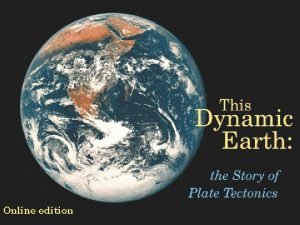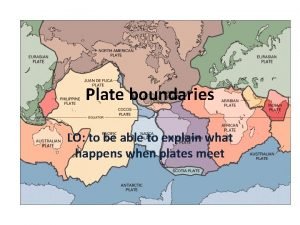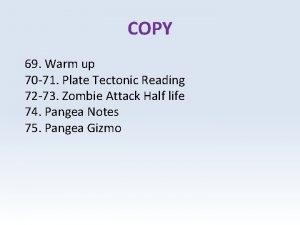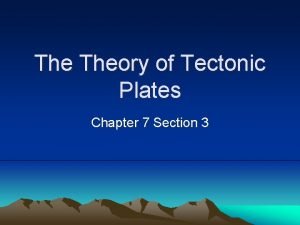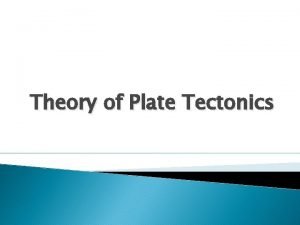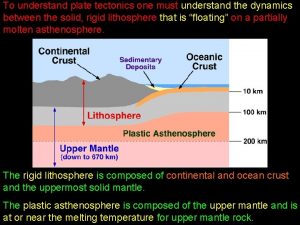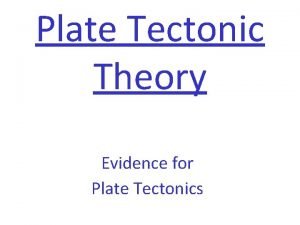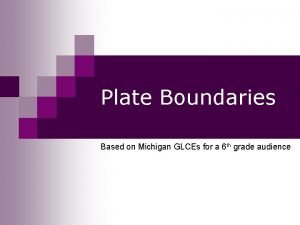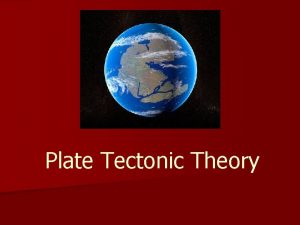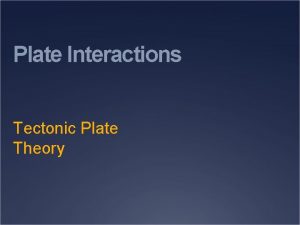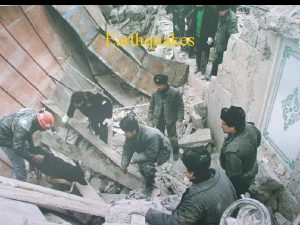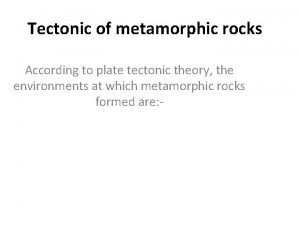Tectonic hazards LO understand the mechanics of plate







- Slides: 7

Tectonic hazards LO: understand the mechanics of plate tectonics. By the end of the lesson you should be able to describe and explain the different way plates move and their associated hazard. Skill – locate on a world map the location of the different plate boundaries (countries that are influenced) Key words: constructive plate boundary, destructive plate boundary, conservative plate boundary.

Plate boundaries Earthquakes and volcanoes are primarily found at plate boundaries. The plates are like giant rafts that slowly move around. Their movement is driven by convection currents the mantle.

Plate boundaries There are four different types of plate boundaries: Destructive plate boundary Collision zones Constructive plate boundary Conservative plate boundary

Destructive plate boundary This occurs when oceanic and continental plates move together. The oceanic plate is forced under the lighter continental plate. Friction causes melting of the oceanic plate and may trigger earthquakes and volcanoes. An example of a destructive plate boundary is where the Nazca plate is forced under the South American Plate - Chile.

Collision plate boundary Collision zones form when two continental plates collide. Neither plate is forced under the other, and so both are forced up and form fold mountains. India moving into Asia creating the Himalayas.

Constructive plate boundary A constructive plate boundary, sometimes called a divergent plate margin, occurs when plates move apart. Volcanoes are formed as magma wells up to fill the gap, and eventually new crust is formed. An example of a constructive plate boundary is the mid. Atlantic Ridge Iceland

Conservative plate boundary A conservative plate boundary, sometimes called a transform plate margin, occurs where plates slide past each other in opposite directions, or in the same direction but at different speeds. Friction is eventually overcome and the plates slip past in a sudden movement. The shockwaves created produce an earthquake. This occurs at the San Andreas Fault in California.
